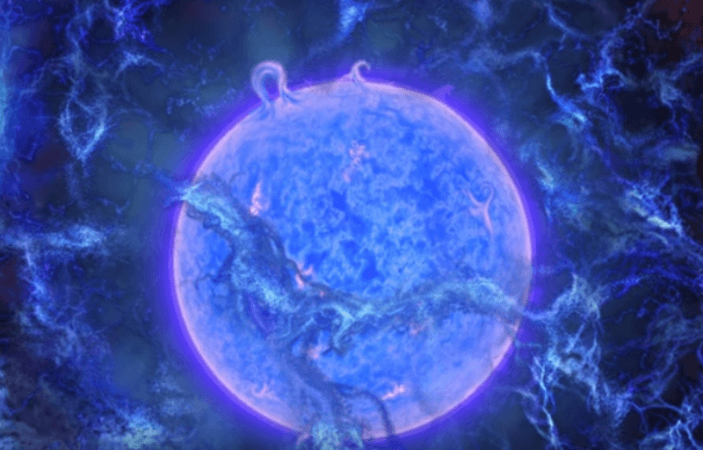
In a first, scientists have detected a signal from "cosmic dawn" – or the moment when the universe's earliest stars shone in the sky. The Murchison Observatory in Western Australia made the breakthrough discovery on Wednesday.
As per the research published in the journal Nature, the signal was a slight smidge in the radio echo of the era when the first stars were born. It was recorded with the help of a small radio telescope – the size of a regular table – which had been initially tuned in to detect the earliest possible traces of hydrogen.
The hydrogen discovered was found in a state that could only be a result of being touched by the intense light of the stars. And while the team of scientists date the time of this interaction to about 180 million years after the Big Bang, tallying with the roughly 13.8 billion years old cosmos, this indicates that the first stars emerged nine billion years before the sun even came to existence.
Dr Judd Bowman of Arizona State University, US, who's the lead author of the study, told BBC News: "We first started seeing signs in our data back in late 2015. And we've really spent the last couple of years trying to think of all sorts of possible alternative explanations, and then rule them out one by one," he said.
"This is the first time any team has been able to present evidence for the detection of this signal and hopefully it will go down as a milestone for this type of astrophysical observation."

However, if the signal is confirmed, experts conducting the research said that it could help explain the origins of the first stars, black holes, galaxies and pretty much every other object that exists. And a companion study also concluded that the unexpected size of the signal suggests that it was influenced by dark matter.
"It's very, very exciting for the field," said Anastasia Fialkov, a Harvard University astrophysicist not involved in either of the studies. "We have never seen the light of the first stars, and this is its signature."
Even millions of years after it began, the universe continued to be a chilly place without any light. Fine, invisible clouds made up of hydrogen gas were its only content and the only existing energy was radiation left over from the Big Bang.
Eventually, with gravity gathering up the densest regions of gas, matter started combining, colliding and collapsing, until the first stars were formed.

While no telescope today can detect the glow from these first stars, theory suggests that the ultraviolet radiation from them could have possibly pierced the hydrogenous haze of the primitive universe – leading to exciting its atoms. This led to the atoms absorbing specks of the background cosmic radiation, adding a faint but lasting signature to it.
The Murchison observatory in Western Australia took up the challenge to pick out this very signature among a vast sea of radio noise coming from the sky. They eventually found it in the region of 78 megahertz and this helped them figure out the time of the starlight-hydrogen interaction.
But what still remains to be striking, is the unexpected strength of the signal. While it suggests that the hydrogen gas was a lot colder than previously estimated by experts, one of the probable explanations behind the strength of the signal is that hydrogen atoms having some direct interaction with the said dark matter.
This observation by the Murchison might be the first hint at such an interaction's possibility – something that could urge attempts of detecting dark matter particles for the first time.
Prof Karl Glazebrook from Swinburne University of Technology, Australia, believes the findings would keep astronomers holding their breath for a confirmation about the signal, from an independent experiment. "If it is, then this will open the door to a new window on the early Universe and potentially a new understanding of the nature of dark matter," he explained.
But as of now - this discovery has already been labelled as much more significant and of greater importance than even the Big Bang, because "we are made of star stuff, and so we are glimpsing at our origin," as astronomer Richard Ellis said.
Johns Hopkins University astrophysicist Marc Kamionkowski, who was not involved in the study, further stressed on the vlue of this discovery, saying it is "about as important as you can get in cosmology."

















